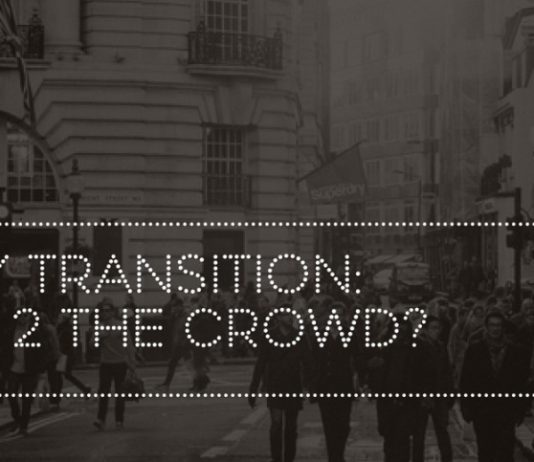Energy Transition: Power 2 the crowd?

Recently, I was one of the 25 participants in a Delphi research regarding the energy transition. A wonderful experience, especially because it dealt with a subject that isn’t headlining my daily schedule. Meanwhile, the results have been published, though are not yet available in English.
During last week’s ‘inspiratieHUB Delphi Energieransitie’, I got on a soapbox and briefly pitched my opinion about this transition. Finally, I’ve chosen to share what I see happening in the world with a broader audience. My observations may be separated in three phases. Below I’ll share my thoughts:
3 Phases:
Now as a starting point
Pushing against the status quo
From controlling to facilitating
Phase 1: Now as a starting point
Less trust in large institutions and readiness to take action;
Historically low interest rates, big money on the market, and a few market makers with more money than a single country;
Technology and experiments are becoming cheaper;
Emergence of peer2peer platforms > sharing knowledge, money, labour, and stuff, fueled by the increased use of mobile devices;
Startups become extremely scaleable and use ‘reverse technology assessment’ > reversed innovation processes. Doing first, talking later. However, still centrally managed and short-term funded;
Startups are seen as a hype, and not yet respected for its real value;
New technologies making existing parties (publicly and privately) discover/proof there raison d’être anew, especially by asking the short term question about competition and regulation in stead of ‘how to be a more qualified organization / government by using new technologies;
People start to see that property isn’t the most ideal solution (95% of my time i’m driving my Volvo V70 all alone);
People always choose the solution that is best for themselves.
Phase 2: Pushing the status quo
New initiatives are faster than the rest, mostly sprouted form frustration or amazement;
Existing organizations mostly react short term and complain about their legacy is if it were a handicap;
New initiatives are praised to the skies and mature organizations are depicted ‘slow, cumbersome and moribund’
Extremes arise; things are either good or bad. You are either for or against;
Techno-optimism: techniques solve all problems. Result: no responsibility;
Experiments with new organization models and techniques: blockchain, cooperative models, etc.
Entrepreneurial activism, like ‘Follow This’ and ‘Shell’.
Phase 3: From controlling to facilitating
Please understand we’re due to look for balance;
Existing organizations are to see their legacy as more than a handicap;
3 Stakeholders:
Civilian: consumer /prosumer
think for themselves
want more control on where where products originate from
will prefer their own convenience and don’t act rationally
have tools to organize themselves quickly and arrange things for themselves. Financing through crowdfunding, shared property as part of the sharing economy, etc.
Ecosystem lowers thresholds for large groups of stakeholders.
offers consumers segregated niche services
become quickly the best in the niche they inhabit
Parties controlling and managing the bigger picture (they don’t have to be today’s ones)
offer a platform (WordPress) on which a consumer may create its own space and the ecosystem may integrate services
think in all-in-one solutions, take burdens away, and create many new business opportunities.
Platform minded governments (Estonia!), process optimization, influence on robotization, and heavily discussing ‘how to foster a purpose filled life and embrace new developments as opportunities, rather than seeing them as threats…
The post Energy Transition: Power 2 the crowd? appeared first on Seats2meet.
Published on December 12, 2016 01:24
No comments have been added yet.



